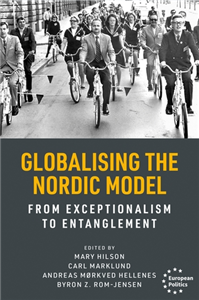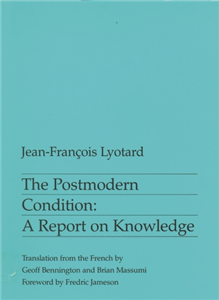Your Search Results
-
Modjaji Books
Modjaji Books is a small, independent, feminist publishing company, that started in 2007 in Cape Town.
View Rights Portal
-
Promoted ContentHumanities & Social SciencesMarch 2017
Air power and colonial control
by David Omissi
Air policing was used in many colonial possessions, but its most effective incidence occurred in the crescent of territory from north-eastern Africa, through South-West Arabia, to North West Frontier of India. This book talks about air policing and its role in offering a cheaper means of 'pacification' in the inter-war years. It illuminates the potentialities and limitations of the new aerial technology, and makes important contributions to the history of colonial resistance and its suppression. Air policing was employed in the campaign against Mohammed bin Abdulla Hassan and his Dervish following in Somaliland in early 1920. The book discusses the relationships between air control and the survival of Royal Air Force in Iraq and between air power and indirect imperialism in the Hashemite kingdoms. It discusses Hugh Trenchard's plans to substitute air for naval or coastal forces, and assesses the extent to which barriers of climate and geography continued to limit the exercise of air power. Indigenous responses include being terrified at the mere sight of aircraft to the successful adaptation to air power, which was hardly foreseen by either the opponents or the supporters of air policing. The book examines the ethical debates which were a continuous undercurrent to the stream of argument about repressive air power methods from a political and operational perspective. It compares air policing as practised by other European powers by highlighting the Rif war in Morocco, the Druze revolt in Syria, and Italy's war of reconquest in Libya.
-
Promoted Content
-
 Trusted Partner
The ArtsApril 2025
Trusted Partner
The ArtsApril 2025Beyond the BBFC
Local and regional film censorship in the UK
by Sian Barber
This work scrutinises British film censorship from a local perspective. Examining different regions and areas, the work of individual councils and their relations with one another and with the BBFC, it offers a broad historical exploration of the intricacies of film censorship in action. Drawing on local archival material and considering the activities of local government in enforcing Cinematograph legislation, this work considers the significance of film censorship apparatus and processes in shaping and informing responses to and control of film culture in different locations across the twentieth century.
-
 Trusted Partner
Humanities & Social SciencesMarch 2026
Trusted Partner
Humanities & Social SciencesMarch 2026Globalising the Nordic Model
From exceptionalism to entanglement
by Mary Hilson
The five Nordic countries - Denmark, Finland, Iceland, Norway and Sweden - frequently attract attention as examples of a 'Nordic model'. The meanings of the term vary, but especially since the global financial crisis of 2008-9 the Nordic countries have often been portrayed positively, as examples of economic dynamism, innovation and social equality. Studies of these images of the Nordic countries and Nordic region and their international circulations are now a well-established field of research. This volume explores how the Nordic model has been shaped by global entanglements, in exchange not only with Western Europe and North America, but also with the Global South. Drawing on selected case studies, the volume offers new perspectives on the meanings of the Nordic model and Nordic exceptionalism in a global context during the half century since c. 1970.
-
 Trusted Partner
Trusted Partner
-
 Trusted Partner
September 2022
Trusted Partner
September 2022Shape of Love - Mit jeder deiner Fasern
Love-Trilogie - Band 1
by Marina Neumeier
Shape of Love – With Every One of Your Fibres
-
Technology, Engineering & AgricultureMarch 1905
The First Book of Farming
by Charles L. Goodrich
This book is a result of the author's search for these facts and truths as a student and farmer and his endeavor as a teacher to present them in a simple manner to others. The object in presenting the book to the general public is the hope that it may be of assistance to farmers, students and teachers, in their search for the fundamental truths and principles of farming.
-
 Trusted Partner
2024
Trusted Partner
2024Interaction Trainer
Over 100 cases with theory and practice
by Dr. E. Schindler and A. Lunzner
It‘s a match?! The interaction check plays a key role when it comes to drug therapy safety. These index cards offer a way of keeping track and familiarising yourself with a wide variety of active ingredient combinations. The standardised structure of the case studies helps you learn • to understand the mechanism of interaction, • to assess the clinical relevance, and • to implement any necessary measures. The 2nd edition has not only been updated, but also expanded to include new cases. Thanks to a handy booklet, users can refer quickly to the theoretical principles.
-
Humanities & Social SciencesNovember 1904
Common Sense
Addressed to The Inhabitants of America
by Thomas Paine
Published anonymously in 1776, six months before the Declaration of Independence, Thomas Paine’s Common Sense was a radical and impassioned call for America to free itself from British rule and set up an independent republican government. Savagely attacking hereditary kingship and aristocratic institutions, Paine urged a new beginning for his adopted country in which personal freedom and social equality would be upheld and economic and cultural progress encouraged.
-
 Trusted Partner
2022
Trusted Partner
2022Formulation Plausibility Check
In accordance with § 7 German Ordinanceon the Operation of a Pharmacy
by Dr. Andreas S. Ziegler
The Ordinance on the Operation of a Pharmacy states that a plausibility check must be undertaken for each new formulation. The tabular compilations of this book help pharmacists to complete this task quickly and reliably. All the information required for the check is clearly laid out and easy to find. New in the 6th edition: Many new active substance – ointment base combinations with demonstrated compatibility | more than 50 new ointment bases | 30 new active substances Bonus: The information about standard doses for paediatric dermatology enables pharmacists to also prepare paediatric formulations. | References to the Ziegler Rezepturbibliothek® (Ziegler Formulation Library), where completely formulated manufacturing instructions for the named active substance – ointment base – combinations can be found. This makes it even easier to supply patients with tested standard preparations. The set includes 50-sheet pads of the complementary form Plausibility Check. The form makes documentation easier and enables rapid and reliable navigation through the tables. This allows both the prescriber’s treatment concept and also possible incompatibilities to be checked in less than no time.
-
The ArtsJanuary 1905
The Elements of Drawing
by John Ruskin
Can drawing — sound, honest representation of the world as the eye sees it, not tricks with the pencil or a few "effects" — be learned from a book? One of the most gifted draftsmen, who is also one of the greatest art critics and theorists of all time, answers that question with a decided "Yes." He is John Ruskin, the author of this book, a classic in art education as well as a highly effective text for the student and amateur today. The work is in three parts, cast in the form of letters to a student, successively covering "First Practice," "Sketching from Nature," and "Colour and Composition." Starting with the bare fundamentals (what kind of drawing pen to buy; shading a square evenly), and using the extremely practical method of exercises which the student performs from the very first, Ruskin instructs, advises, guides, counsels, and anticipates problems with sensitivity. The exercises become more difficult, developing greater and greater skills until Ruskin feels his reader is ready for watercolors and finally composition, which he treats in detail as to the laws of principality, repetition, continuity, curvature, radiation, contrast, interchange, consistency, and harmony. All along the way, Ruskin explains, in plain, clear language, the artistic and craftsmanlike reasons behind his practical advice — underlying which, of course, is Ruskin's brilliant philosophy of honest, naturally observed art which has so much affected our aesthetic. Three full-page plates and 48 woodcuts and diagrams (the latter from drawings by the author) show the student what the text describes. An appendix devotes many pages to the art works which may be studied with profit.
-
 Trusted Partner
Trusted Partner
-
 Trusted Partner
Humanities & Social SciencesAugust 1984
Trusted Partner
Humanities & Social SciencesAugust 1984The Postmodern Condition
A report on knowledge
by Jean-François Lyotard
Many definitions of postmodernism focus on its nature as the aftermath of the modern industrial age when technology developed. This book extends that analysis to postmodernism by looking at the status of science, technology, and the arts, the significance of technocracy, and the way the flow of information is controlled in the Western world. ;
-
 Trusted Partner
October 2022
Trusted Partner
October 2022(Un)check Your Privilege
How the debate about privilegesprevents justice
by Jörg Scheller
There is a great deal of talk about privileges. At the head of the privileged in this narrative is the 'white man'. Today, the word 'privilege' is used as a term for advantages and favours. Jörg Scheller is clear: "Anyone who fights ideology in an ideological way is not doing himself any favours, and instead is doing his opponent a tremendous one." In his essay, Scheller returns the concept of privilege to its historicity, distinguishing between prerogatives and advantages. What exactly are privileges? When does the attribution 'privileged' make sense, and in which cases can it obscure our view of reality?
-
 Trusted Partner
Medicine
Trusted Partner
MedicineTheory and Model of Physiotherapy
by Heidi Höppner, Robert Richter (editors)
How will physiotherapy adapt to developments and challenges in the 21st century? New thinking while keeping the tried-and-tested: This is the motto adopted by eight physiotherapy researchers and practitioners in this handbook. Their contributions advance the theory for their discipline. They have met regularly at the so-called Berlin Salon since 2015: they analyze, discuss, and incorporate existing models and adopt a theory. They are all professionally qualified physiotherapists with further training in fields such as health science, education, and therapy management. They all suffer from the lack of theory in professional practice, and they have all experienced the diverse, often unconscious discourses in the field. Theoretical understanding and theory development require theory-driven reflection, the results of which have long since left the Berlin Salon and been adopted internationally. Target Group: Physiotherapists, healthcare scientists, university instructors
-
 Trusted Partner
November 2010
Trusted Partner
November 2010Die Pariser Weltausstellung 1889
Bilder von der Globalisierung
by Beat Wyss
Die gelungenste Weltausstellung aller Zeiten war die Exposition Universelle de Paris von 1889. Weit über 32 Millionen Menschen besuchten das gigantische Spektakel mit knapp 62.000 Ausstellern aus 54 Nationen und 17 französischen Kolonien. Das Wahrzeichen der Schau, der Eiffelturm, blieb Paris bis heute erhalten. Einen legendären Ruf erwarb sich auch das offizielle, wöchentlich erscheinende Journal der Weltausstellung. Auf großformatigen, mit Stahlstichen üppig illustrierten Seiten berichtete es von den Sensationen vor Ort, von dreirädrigen selbstfahrenden Karren und ethnologischen Dörfern, in denen es Kamelreiten für die Kinder und Bauchtänze für die Herren gab. Der Schweizer Kunsthistoriker Beat Wyss hat die hundert originellsten Abbildungen ausgewählt. Sie illustrieren, wie die Expo den Erdball auf ein »Weltdorf« zwischen Trocadéro und Champ de Mars schrumpfen lässt, wie räumliche Distanzen abgebaut und dabei kulturelle Differenzen freigelegt werden. Das späte 20. Jahrhundert wird dafür den Begriff der Globalisierung prägen. Beat Wyss zeigt, wie die Gesellschaften seit dem 19. Jahrhundert mit diesem Prozeß umgehen und mit der Verwestlichung der Welt eine Orientalisierung des Westens einhergeht. Dem Leser als Flaneur über die Bühne der Weltausstellung wird klar: Die Expo 1889 belegt nicht nur den aktuellen Zustand einer Zeit, sondern bietet über die spektakuläre Anordnung ihrer Exponate den Vorschein einer gesellschaftlichen Utopie.
-
 Trusted Partner
The ArtsJanuary 2016
Trusted Partner
The ArtsJanuary 2016Face: shape and angle
Helen Muspratt, photographer
by Jessica Sutcliffe
Born into a civil service family in India in 1907, Helen Muspratt was a lifelong communist, a member of the Cambridge intellectual milieu of the 1930s, and a working mother at a time when such a role was unusual for women of her class. She was also a pioneering photographer, creating an extraordinary body of work in many different styles and genres. In partnership with Lettice Ramsey she made portraits of many notable figures of the 1930s in the fields of science and culture. Her experimental photography, using techniques such as solarisation and multiple exposure, bears comparison with the innovations of Man Ray and Lee Miller. This book reproduces some of Helen Muspratt's most important photographic images, including documentary records of the Soviet Union and the Welsh valleys. The accompanying text by Jessica Sutcliffe is an intimate and revealing memoir of her mother that offers a fascinating insight into her life, work and politics. ;
-
 Trusted Partner
Trusted Partner
-
 Trusted Partner
Literature & Literary StudiesJanuary 2008
Trusted Partner
Literature & Literary StudiesJanuary 2008Michaelmas Term
Thomas Middleton
by David Bevington, Gail Paster, Richard Dutton, Alison Findlay, Helen Ostovich, Hazel Bell
Michaelmas Term is one of five satiric city comedies that the young playwright Thomas Middleton wrote for the boy players of St Paul's Cathedral, sometime before 1607. Set in a vividly detailed, realistic urban milieu at the start of London's social season, the play comes alive through the central contest between Ephestian Quomodo, an ambitious, land-hungry city merchant, and Richard Easy, a naive landowning gallant just arrived in the city. Easy is soon deep in debt and his struggle to recoup his debts and reclaim his land from Quomodo takes places against a sharply drawn set of London types - Quomodo's socially and sexually ambitious wife and daughter, the Scottish upstart Andrew Lethe, and his mistress the Country Wench, eager to exchange her virginity for an elegant new wardrobe. With its witty, bawdy dialogue and complex gulling action, the play offers an unusually cynical assessment of the social and familial displacements, and of the alienation and loss of cultural memory, so characteristic of life in the great metropolis of early modern London. In this sense, the play is an early satiric diagnosis of urban modernity. This edition, newly collated and edited, features complete explanations of the play's often bawdy exchanges and the complex stage action of the gulling and secondary plots. It will be invaluable for advanced students of the Middleton canon as well as all those interested in early modern London and its vibrant theatrical culture, especially the tradition of boy choristers as professional actors. ;
-
PoetryJuly 1904
Paradise Lost
by John Milton
Paradise Lost is an epic poem in blank verse by the 17th-century English poet John Milton. The first version, published in 1667, consisted of ten books with over ten thousand lines of verse. A second edition followed in 1674, arranged into twelve books (in the manner of Virgil's Aeneid) with minor revisions throughout and a note on the versification. The poem concerns the biblical story of the Fall of Man: the temptation of Adam and Eve by the fallen angel Satan and their expulsion from the Garden of Eden. Milton's purpose, stated in Book I, is to "justify the ways of God to men".



































